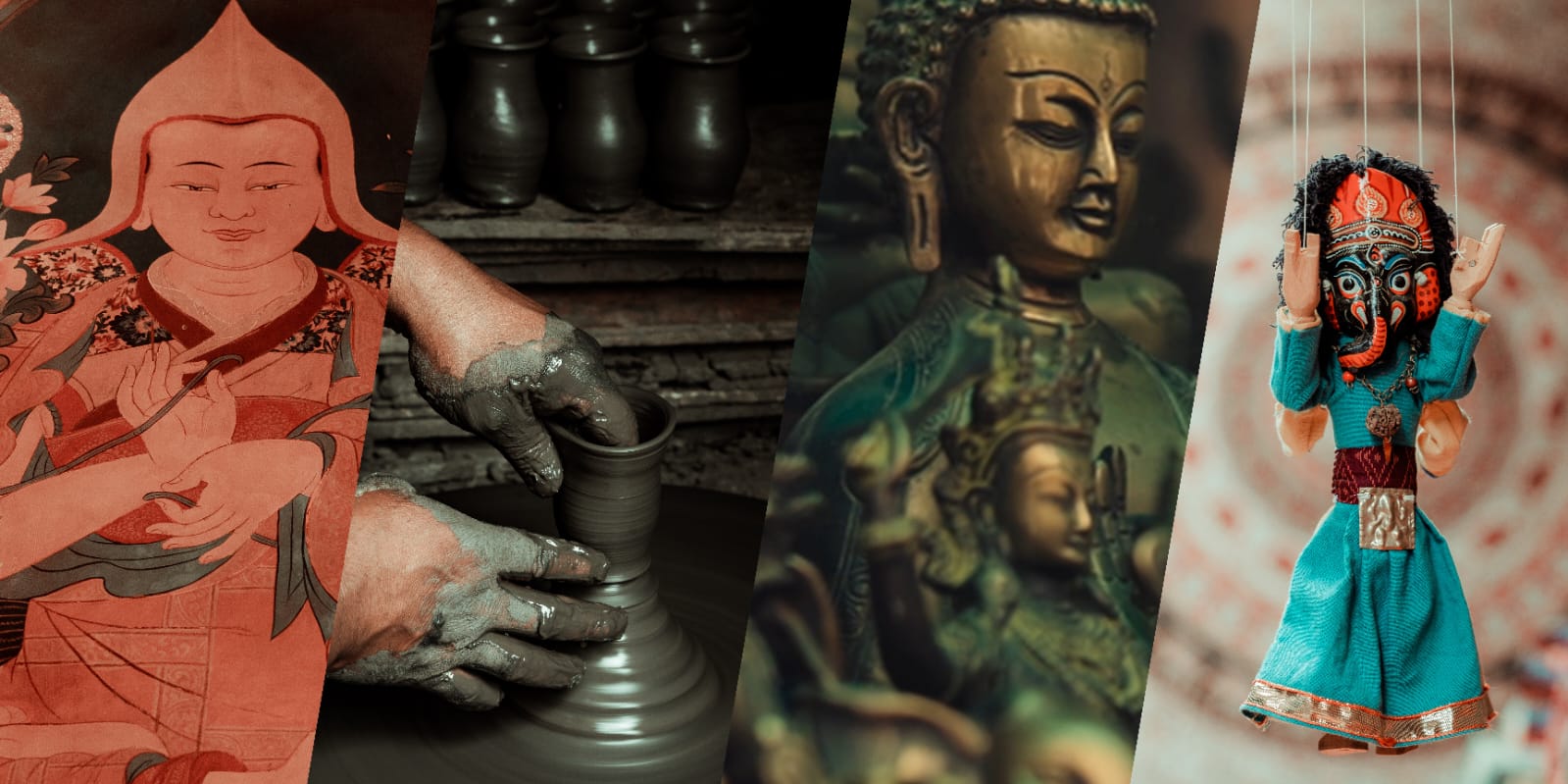Description
☛ INTRODUCTION TO THANGKA:
A thangka, variously spelled as a thangka, tangka, thanka, or tanka, is a Tibetan Buddhist painting on cotton, silk applique, usually depicting a Buddhist deity, scene, or mandala. Thangkas are traditionally kept unframed and rolled up when not on display, mounted on a textile backing somewhat in the style of Chinese scroll paintings, with a further silk cover on the front. So treated, thangkas can last a long time, but because of their delicate nature, they have to be kept in dry places where moisture will not affect the quality of the silk.
☛ MANTRA “OM MANE PADME HUM”:
OM MANI PADME HUM is the six syllable mantra of the Avalokitesvara, known as a savior and protector from the dangers. It is believed that one who chant this mantra, will be saved from all dangers and the misery in the life. This mantra is widely used in Mahayana Buddhism for different purposes from chanting to using them in arts. The mantras are often found inscribed on rocks, prayer wheels, Chaitya walls, paths, the approaches and exists of the villages.
☛ MEDICINE BUDDHA:
Bhaisajyaguru is known as Medicine Buddha. He is also called the healing Buddha. He is said to dispense spiritual medicine when properly worshiped. It is even believed that an efficacious cure may be accomplished by merely touching the image. In Tibet, he may be represented either as a buddha or as a Bodhisatwa. As a buddha, he has the urn (small round bulge or protuberance above the bridge of the nose) the fourth superior marks of a buddha Ushinisha (A Buldge of protuberance in the skull of the buddha the first superior marks of a buddha ) short and curly hair. He wears a monastic robe, is seated with the legs crossed. His left hand lying in his lap in meditation mudra, usually holds the medicine bowl, while the right hand in charity mudra hold either a branch with fruit, or the fruit alone, of the myrobalan, as medicinal plant found in India and other tropical countries.
☛ WHITE TARA:
White Tara embodiment of peace directed through loving compassion. From her serenity, she lends grace and dignity to situations and encourages the good to arise in all circumstances and situations. She perpetuates the Four Measureless States of a. Loving Kindness [Skt. Metta] b. Compassion [Skt. Karuna] c. Sympathetic Joy [Skt. Mudita] and d. Equanimity {fairness & tolerance} [Skt. Upekka] with reference to the past present and future circumstances. She also helps bestow longevity.
☛ GREEN TARA:
Samaya Tara, popularly known as Green Tara. She is represented in a royal ease posture with her left leg bent her left leg overstepping the main lotus and resting on a blue lotus ready to get up and offer assistance to those in need. She is portrayed with maroon Buddhist robes and jewelry. The earrings represent patience, understanding, and renunciation. The diadem with five jewels represents the transmutation of the five delusions into the Five Buddha Wisdoms. She is shown with a benevolent countenance seated upon a white moon disk which is associated with special restorative nectar associated with the naval chakra center. In Buddhists, the moon symbolizes the wisdom aspect which when coupled with compassion leads to Sakyamuni Buddha’s enlightenment. Her right hand is gracefully lowered in varada mudra, the boon-granting gesture.
☛ YELLOW JAMBHALA:
Jambhala (also known as Dzambhala, Dzambala, Zambala, or Jambala) is the God of Wealth and appropriately a member of the Jewel Family (see Ratnasambhava). He is sometimes equated with the Hindu deity Kubera. Jambhala is also believed to be an emanation of Avalokitesvara or Chenrezig, the Bodhisattva of Compassion. There are five different wealth Jambhalas; each has its own practice and mantra to help eliminate poverty and create financial stability.
Gyalten Sogdzin Rinpoche said that Jambhala is the protector of all Lineages and of all sentient beings from all sickness and difficulties. Jambhala is a Bodhisattva of material and spiritual wealth as well as many other things, especially of granting financial stability.
Because in this world, there are all kinds of wrathful and negative emotions or bad spirits, and sometimes they will harm you and other sentient beings, Dzambhala must take on such a wrathful and powerful form to protect us from these harmful spirits and negative karma. Especially, Dzambhala helps us minimize or decrease all misfortunes and obstacles and helps us increase all good fortune and happiness.














Reviews
There are no reviews yet.